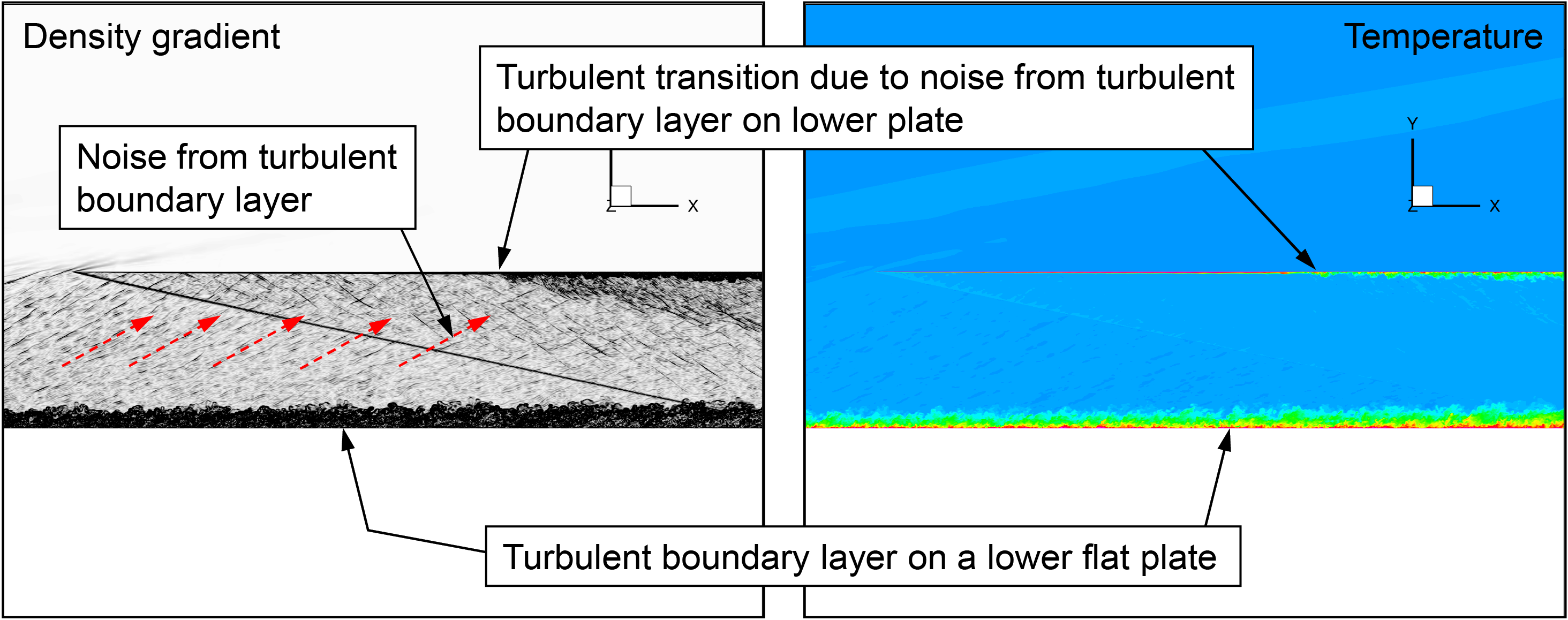Research and development of prediction technology for thermal and aerodynamic characteristics of hypersonic vehicle
JAXA Supercomputer System Annual Report February 2022-January 2023
Report Number: R22EDA201G20
Subject Category: Aeronautical Technology
- Responsible Representative: Yasuhiro Mizobuchi, Aviation Technology Directorate, Aircraft Lifecycle Innovation Hub
- Contact Information: matsuyama.shingo@jaxa.jp(matsuyama.shingo@jaxa.jp)
- Members: Keisuke Fujii, Shingo Matsuyama, Hidemi Takahashi, Takahiro Yamamoto
Abstract
Strong shock waves are generated around a flying object at hypersonic speeds, and the high-temperature gas compressed by the shock waves causes strong heat transfer to the hypersonic vehicle. The objective of this research is to establish a technique to reproduce such a flow field around a hypersonic vehicle by CFD and to accurately evaluate the aerodynamics and heating applied to the vechicle.
Reference URL
N/A
Reasons and benefits of using JAXA Supercomputer System
The flight conditions of hypersonic vehicles often have high Reynolds numbers, which necessitates the evaluation of turbulent heating. Since this study aims to evaluate turbulent heating with high accuracy using Direct Numerical Simulation (DNS) and Large Eddy Simulation (LES), a three-dimensional unsteady analysis is inevitably required. The computational cost of such a large-scale three-dimensional analysis is very high, and analysis using a supercomputer is essential.
Achievements of the Year
Turbulent transitions in boundary layers in hypersonic flows are still a difficult problem to predict. In order to clarify the mechanism of turbulent transition and to obtain data to construct a prediction model of the transition, a DNS was conducted for the turbulent transition in a flat boundary layer at M=5. Figure 1 show the analysis of the process of turbulent transition of the boundary layer on the two plates placed facing each other. The DNS analysis shows that the turbulent boundary layer is generated by an artificial disturbance on the lower plate, and that the noise emitted by the turbulent boundary layer reaches the boundary layer on the upper plate, causing a turbulent transition.

Fig.1: DNS of turbulent transitions occurring in the boundary layer on two flat plates placed facing each other (Mach 5).
Publications
N/A
Usage of JSS
Computational Information
- Process Parallelization Methods: MPI
- Thread Parallelization Methods: OpenMP, Automatic Parallelization
- Number of Processes: 500 – 4000
- Elapsed Time per Case: 150 Hour(s)
JSS3 Resources Used
Fraction of Usage in Total Resources*1(%): 1.99
Details
Please refer to System Configuration of JSS3 for the system configuration and major specifications of JSS3.
| System Name | CPU Resources Used(Core x Hours) | Fraction of Usage*2(%) |
|---|---|---|
| TOKI-SORA | 53651316.60 | 2.34 |
| TOKI-ST | 58872.35 | 0.06 |
| TOKI-GP | 0.00 | 0.00 |
| TOKI-XM | 0.00 | 0.00 |
| TOKI-LM | 33862.03 | 2.27 |
| TOKI-TST | 0.00 | 0.00 |
| TOKI-TGP | 0.00 | 0.00 |
| TOKI-TLM | 0.00 | 0.00 |
| File System Name | Storage Assigned(GiB) | Fraction of Usage*2(%) |
|---|---|---|
| /home | 276.74 | 0.25 |
| /data and /data2 | 3656.65 | 0.03 |
| /ssd | 674.93 | 0.09 |
| Archiver Name | Storage Used(TiB) | Fraction of Usage*2(%) |
|---|---|---|
| J-SPACE | 1.94 | 0.01 |
*1: Fraction of Usage in Total Resources: Weighted average of three resource types (Computing, File System, and Archiver).
*2: Fraction of Usage:Percentage of usage relative to each resource used in one year.
ISV Software Licenses Used
| ISV Software Licenses Used(Hours) | Fraction of Usage*2(%) | |
|---|---|---|
| ISV Software Licenses(Total) | 463.62 | 0.32 |
*2: Fraction of Usage:Percentage of usage relative to each resource used in one year.
JAXA Supercomputer System Annual Report February 2022-January 2023


